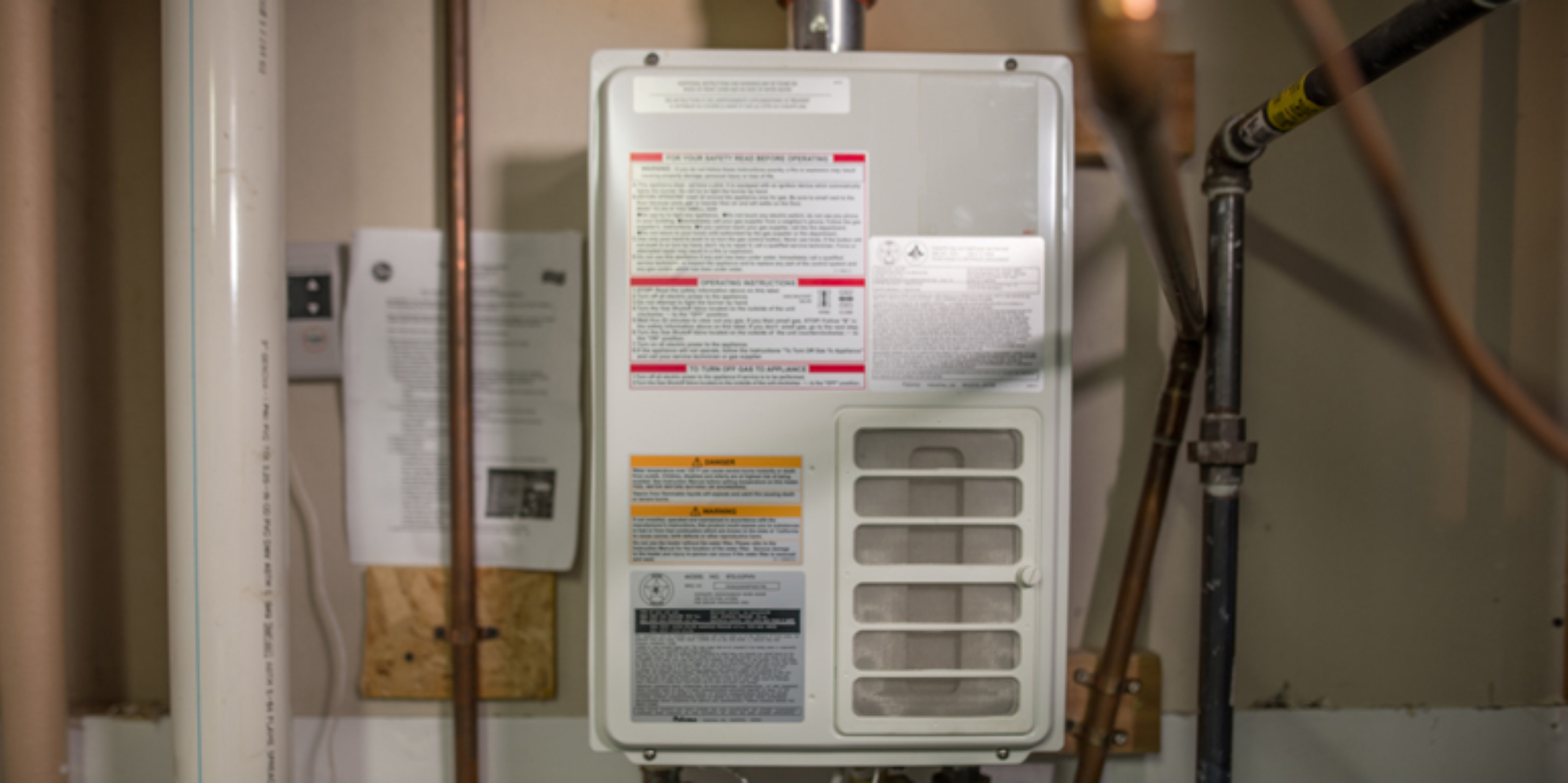
Tankless water heaters typically provide an endless supply of hot water, but only if they are correctly maintained. Keep your tankless water heater in great shape and protect your investment! Use the tips below to flush your tankless water heater and remove the limescale in order to keep it working perfectly.
The process of flushing the water heater is also known as descaling. This important part of tankless water heater maintenance should be done every six months to two years, depending on the hardness of your water.
Just as your shower heads and sink aerators collect limescale, your tankless water heater builds up lime deposits over time. It’s important to remove this to prevent damage to the unit.
In this article, we’ll walk you through what you need to flush your appliance and provide you with a few tips on how to maintain a tankless water heater:
- Supplies to Flush a Tankless Water Heater
- How to Flush a Tankless Water Heater
- How to Clean the Water Filter in Your Tankless Water Heater
Supplies to Flush a Tankless Water Heater
Before you get to work, you need to acquire the right supplies. Here’s what you’ll need to flush your water heater:
- Sump pump (aka submersible utility pump) — 1/6 horsepower is ideal for descaling a tankless water heater. Be careful if you’re using a pump stronger than 1/4 HP.
- Eleven litres of distilled white vinegar
- One 20-litre bucket
- Two lengths of hose (.6 ‒ 1.2 metres) with the necessary fittings — These should have been supplied with your unit. Otherwise, you can find them at your local hardware store. They look like washing machine water supply hoses.
How to Flush a Tankless Water Heater
- Set up your project.
- Shut off the gas line or, if it’s electric, trip the circuit breaker.
- Remove the access panel or cover, which is usually held in place by a few small screws or tabs.
- Turn off the water supply and release the pressure release valve.
- Hook up one length of hose to the inlet side of the water heater, which is where cold water enters the system. There should be a separate hose connection to do this, or you might have to remove the existing cold-water supply hose. Connect your small sump pump to the other end of this hose. Submerge the pump in a 20-litre bucket filled with 11 litres of distilled white vinegar.
You’re creating a closed-loop system so the vinegar that enters the water heater exits back into the bucket before it is recirculated. If you’re using the existing hose’s connection rather than a separate connection for flushing, be sure to open the valve before you continue.
- Once the hoses are correctly attached, run the sump pump for one hour. The vinegar will work its way through the pipe system, removing lime scale and mineral buildup inside. After one hour, replace the vinegar with fresh water to remove any vinegar from the system.
- Once this is complete, shut off the pump, remove your flush hoses, and close the valves. Then reattach the water hoses to the tankless water heater. Refer to the unit’s instruction manual for proper start-up procedures. This process usually begins with turning the water back on and then the unit’s gas or power.
How to Clean the Water Filter in Your Tankless Water Heater
Some tankless water heaters have a sediment screen to keep larger debris from reaching the heating unit. These sediment screens are typically usable for the life of the tankless heater and can be cleaned under running water or soaked in distilled white vinegar until they are free of debris. The location of this filter depends on the make and model of your water heater; consult the manufacturer’s directions if you cannot find it.
Professional Tankless Water Heater Maintenance
Tankless water heaters can last decades if you take care of them. Regular maintenance is important to keep them running smoothly. If you find yourself too busy to flush your tankless water heater—or a little confused about it—Mr. Rooter® Plumbing can help.
Give us a call, or request an appointment online for water heater maintenance. If you live in an area with hard water, we recommend installing a water softener to prolong the life of all your plumbing appliances. We can help you make this decision!
